Maricopa Agricultural Center
Putting knowledge creation into practice.
A testbed for large-scale scientific research and development.
The Maricopa Agricultural Center is a 2100-acre research facility providing 1,700 tillable acres, 15,000 ft2 of greenhouse space, and 24 research labs.
About
The Maricopa Agricultural Center (MAC) strives to be at the forefront of disciplinary field investigations, as well as develop, deliver and service the best integrated agricultural technologies. Home to the USDA ARS Arid Land Agricultural Research Center, MAC's main focus is on cotton, small grains, alfalfa, and new specialty crops that could be used to provide fibers, oils, pharmaceuticals, and other biological products.
the facility supports research projects within:
- Cotton, small grains and specialty crops
- Precision agriculture and automation
- Plant phenotyping and sensing
- Irrigation and water quality
- Food safety
- Soils and crop fertility
- Plant breeding and disease control
- Field integrated pest management
- Urban entomology and pest management
Beyond research and development, MAC provides a community hub for Cooperative Extension and a p
To support meetings and gatherings, MAC has , as well as a 10 room dormitory .
Maricopa Agricultural Center is the University of Arizona’s testbed for scientific development, and a platform for demonstration and delivery of solutions to Arizona’s residents, industries, and communities.
To be an effective testbed and platform that enables science-based solutions and socio-environmental resilience through putting knowledge creation into practice.
The Maricopa Agricultural Center is committed to providing the best environment for all members of the University of Arizona community. Our staff, faculty and students practice and value diversity and inclusiveness. We respect and value all social identities.
Maricopa Agricultural Center (MAC) is a 2,100-acre experimental farm located twenty miles south of Phoenix and twenty miles northwest of Casa Grande, Arizona. The north and east sides of the Center borders the Gila River Indian Community Reservation and private agricultural farms border the south and west sides of the Center. It was acquired from Mr. Fred Enke in January 1983 and consolidates activities formerly conducted at the Cotton Research Center in Phoenix and the Mesa Farm in Mesa.
The Center is an integral and essential part of the research, extension and teaching resources of the College of Agriculture at the University of Arizona in Tucson. The Bartley P. Cardon Research Building was dedicated in October 1987. This marked the construction completion of the greenhouses, storage buildings, shop, cotton research gins, irrigation facility, guest quarters, and supervisory housing. A unique partnership has been established with other agencies, organizations and agricultural industries to encourage collaborative research projects with faculty and provide industry the opportunity to conduct their own proprietary research without disclosure or indebtedness to the University.
In the late 1970's the Board of Regents appointed an Agriculture Advisory Committee (Dwight Patterson, Chairman, David Gipe, Cecil Miller Jr., Lynn Sharp, John Smith, Keith Walden, and Sidney Woods) to advise the College of Agriculture Dean Bartley P. Cardon and University Administration on the disposition of the Cotton Research Center and Mesa Farm. Both the Cotton Research Center and the Mesa Farm were located in an urban area and the Board of Regents wanted the farms to relocate to an agricultural setting. This Committee presented the purchase plan for the Maricopa Agricultural Center to the Board of Regents in September 1982. The Board of Regents approved this purchase and decided that the acreage to be used for experimental purposes should be controlled by the available budget from the Cotton Research Center and Mesa Farm. It was recommended by the Advisory Committee that the experimental farm size be set at approximately 500 acres and that approximately 100 acres would be set aside for roads, ditches, and building site for support facilities. The experimental farm could be increased in size in the future as research needs and budget support was established.
The use of the remaining 1500 farmable acres was discussed. It was decided not to sell this acreage since it could be a hedge against future needs by the College and the entire 2100 acres had been developed as a single management unit. Any sale or lease of a portion of this farm would require a major change in the irrigation system by relocating wells and ditches. Dean Cardon suggested that the 1500 acres be designated as the Arizona Demonstration Farm (later shorten to Demonstration Farm). This farm would operate on a commercial basis and serve as a facility to demonstrate the commercial viability and manageability of the results from research. The Board of Regents agreed that the proceeds from all sales would be recycled back into the operating account and at the start of each crop year the University would arrange a "crop loan" to finance land preparation and crop production. This loan would be paid back to the University as revenues were received from crops harvested. It was intended and estimated that a sufficient cash reserve could be accumulated so that a crop loan wouldn't be necessary after a few years. It was recognized that in some years it might be extremely difficult to maintain a positive operational cash flow, however, over several years a positive cash flow was essential or the farm's operation would be terminated. These operational restrictions were approved and recommended by the Agricultural Advisory Committee, and agreed to by Dean Cardon. The Board of Regents then approved the formation and operation of the Demonstration Farm.
The Demonstration Farm started planting the first crops in 1983. A Farmers' Advisory Committee was formed that consisted of three farmers in the area (Oliver Anderson, John Smith and Wilbur Wuertz). Later, a fourth member (Dr. John Niederhauser) was added to advise on new crops. A Resident Director was appointed in 1989 to oversee the Demonstration Farm and Research Farm and supervise all superintendents and farm managers. At this time the Farmers' Advisory Committee was increased to 10 members that were appointed to three-year terms.
The agricultural development in the Maricopa area began in the early 1950's when cotton acreage was increasing. It was during this time the Mr. Fred Enke and Mr. John Smith formed a farming partnership in 1952. Fred and John had become friends while attending the University of Arizona in the mid 1940's. They both belonged to the same fraternity and played on the University football team. Fred was the tailback and John was the tight end. After graduation Fred played professional football with the Detroit Lions, Philadelphia Eagles, and the Baltimore Colts until 1956 when he retired from football. It was during the off-season that they met and formed the farming partnership. Their first farming property was the west half of section 18, Township 4S and Range 4E. This half section was bought from Mr. Charlie Beterton who had leased it to Mr. Martin Talla in 1952. Fred and John bought this property for $90,000 and grew their first cotton crop in 1953. Fred would help John till the soil, plant, and irrigate the cotton, then in the early fall he would leave to play professional football. Cotton was planted on the entire 320 acres in one-mile long rows running south to the north. This partnership prospered and many other properties were bought. Fred and John ended their partnership in 1963 so that they could each pursue their own agriculture developments.
Mr. Fred Enke bought section 19 Township 4S, Range 4E for $500 from Mr. Buster Brown in 1964. Mr. Brown started farming this section in 1953, about the same time that Fred and John first started their partnership just to the north.The south half of section 20 Township 4S, Range 4E was state land and was leased by Walter Bartles who cleared this land and started farming in the early 1950's. Fred bought this lease from Mr. Bartles in 1965 for $66,000. Later Fred worked with the State Land Department to have this land put up for sale. An auction was held on the Pinal County Court House steps. It was proposed that the bidding would start at $200/acre and would be sold in two 160-acre parcels. Fred and his wife would each buy one of the parcels. The first parcel sold for $64,000 and the second for $32,000. Fred's farming operations expanded to include properties in the Hidden Valley area. Fred bought the final 800 acres (west half of section 17, east half of section 18 and the northwest quarter of section 20 Township 4S, Range 4E) for $800 from the Jack Nickols estate in 1977. This completed the total acreage that the University of Arizona purchased in 1982 for $2,000 per acre plus all of the farm equipment. Fred had leveled all of this property prior to the University sale. The University named this property the Maricopa Agricultural Center.
The Cotton Research Center was one of the University farms whose activities were transferred to the Maricopa Agricultural Center in January 1983. The 257-acre Cotton Research Center was located in Phoenix between 40th and 48th Streets, and Broadway and Roesser Roads. In addition to the deeded acreage, the University leased 42 ½ acres from the Department of Transportation, which adjoined the farm on the southeast. The Cotton Center was originally a 265-acre tract purchased in 1955 by the Arizona Cotton Planting Seed Distributors and the Arizona Cotton Growers Association from the Bartlett-Heard estate for $207,530. These two cotton-farmer associations donated this land to the University and also contributed materially to the construction of the physical facilities. The original farm acreage was reduced by eight acres when the University deeded five acres for the U.S. Water Conservation Laboratory in 1958 and three acres to Maricopa County for a new County Agricultural Extension Center in 1972.
The Mesa Farm was the other University farm whose activities were transferred to the Maricopa Agricultural Center in January 1983. The Mesa Farm was a 160-acre farm that was purchased in 1914 with funds appropriated by the State Legislature and contributions from many of the Salt River Valley farmers. This farm was located in Mesa between Dobson and Alma School Roads, and Main Street and the railroad tracks. The farm was used for research with both animals and plants from 1915 until 1950. In 1952 the vegetable research program, which had been conducted at the Salt River Valley Vegetable Research Farm (often referred to as the "The University of Arizona Date Garden") was moved to the Mesa Farm. Field research was conducted on many new, unusual and less common crops, most of which were agronomic.
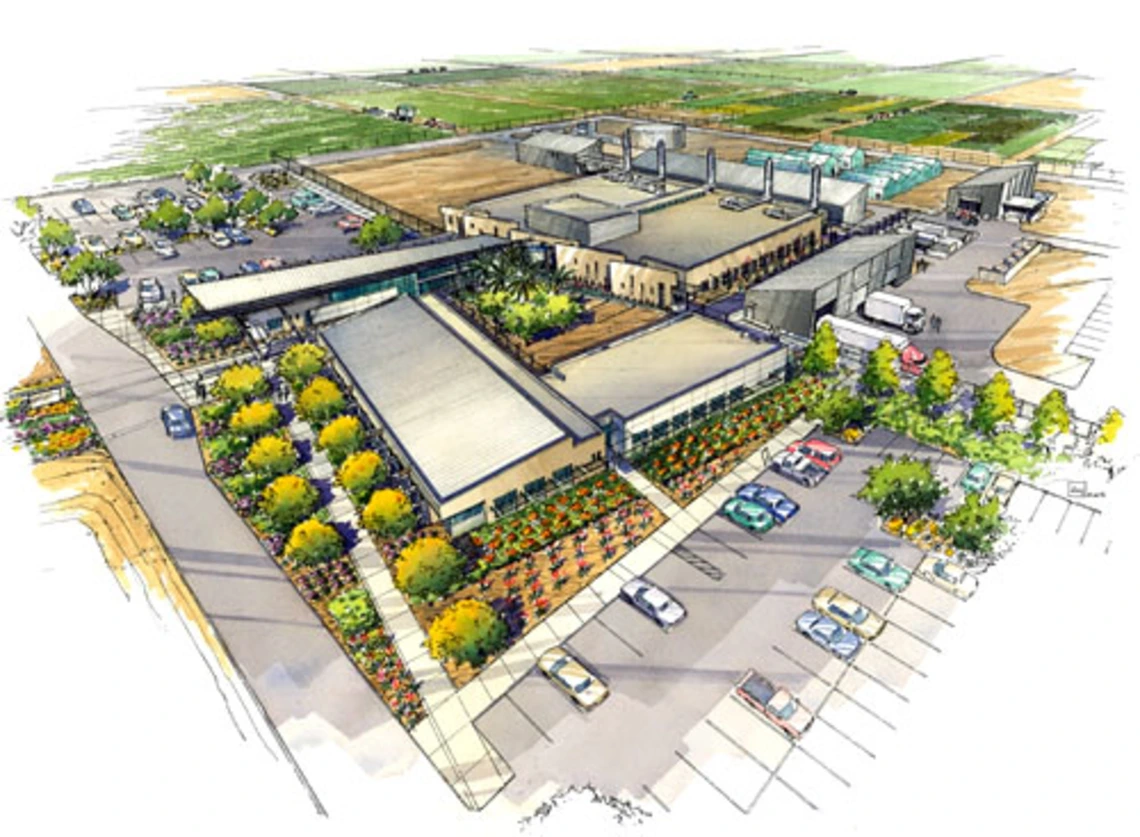
U.S. Arid-Land Agricultural Research Center (ALARC)
The USDA's 97,000 ft2 research center houses 23 research scientists and over 40 research and administrative support personnel on the Maricopa Experiment Station campus. The mission of the research center is to develop sustainable agricultural systems, protect natural resources, and support rural communities in arid and semi-arid regions through interdisciplinary research. Research topics include crop management, integrated pest management, irrigation technology, remote sensing, water reuse, crop breeding and physiology, and global climate change.
Explore the programs and research we support.
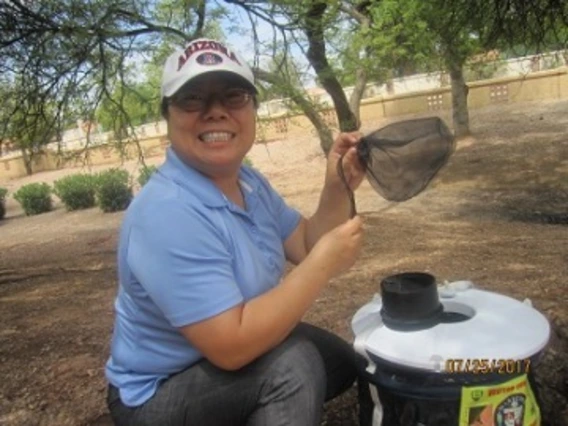
Integrated Pest Management
From the field to sensitive environments like homes and schools, faculty at MAC participate in a number of high-impact, risk-reduction projects focused on improving Integrated Pest Management practices to protect vulnerable people, crop production, and the environment.
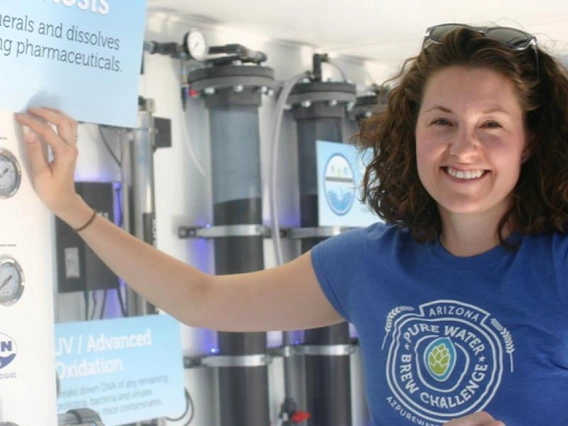
Water Quality
Water quality researchers at MAC assess irrigation water for produce production, assist food safety managers with testing, investigate water quality of surface and ground water, study reclaimed water for potable and non-potable reuse, and promote water quality best practices to improve environments.
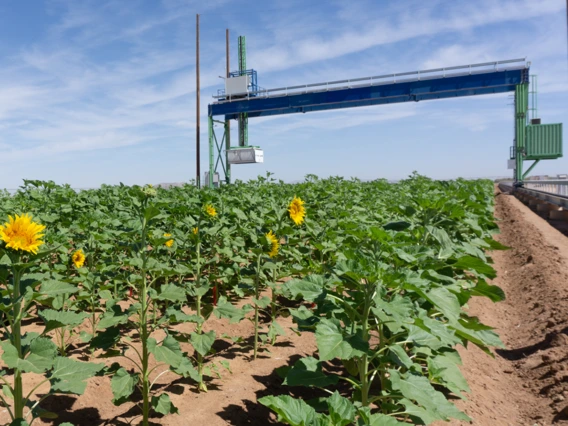
Arid-land Agriculture
Arizona has what researchers call ‘the climate of tomorrow, today.’ Scientists are using a 30-ton robotic field scanner at MAC - the largest agricultural robot in the world - to study plant genetics and develop stress-resilient crops.
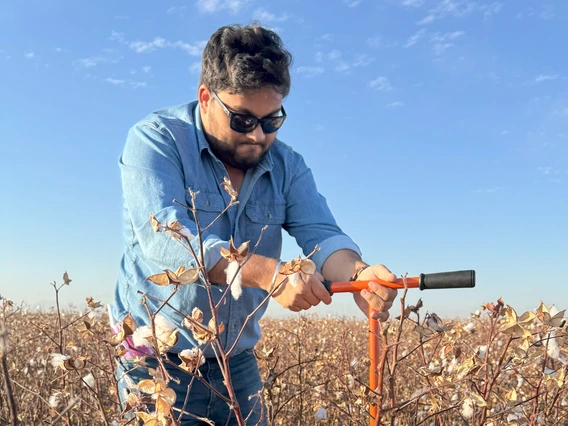
Soil Health
We conduct research to identify and innovate best management practices (BMPs) for arid, irrigated agroenvironments that support grower adoption of sustainable agricultural approaches under biotic and abiotic stresses.





